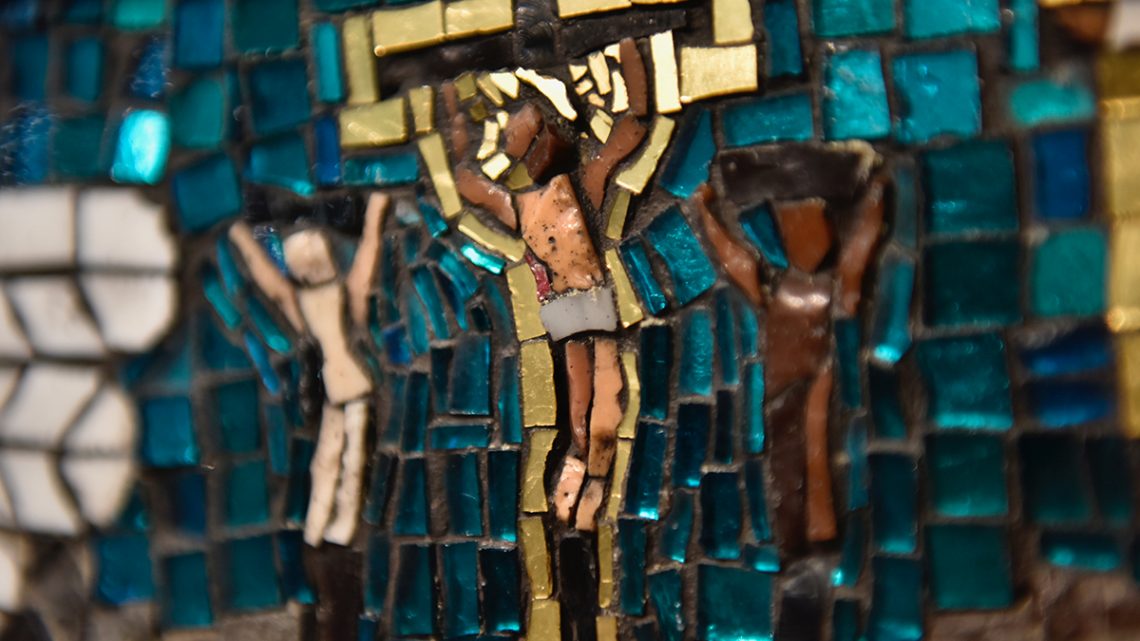A major new artwork commissioned to mark the astonishing achievement of St Jerome is to be unveiled on the 1600th anniversary of his death on September 30, 2020.
Jerome (c.AD 347–420) translated the Bible from the original Hebrew, Aramaic, and Greek into Latin, the first scholar to do so systematically. His ‘Vulgate’ translation became the standard biblical text of the Roman Catholic Church and is still used today.
Now a mosaic commissioned by Bible Society and the Catholic Church in England and Wales is celebrating his achievement. Created by Portsmouth-based artist Pete Codling, ‘Little Bits of God’ tells the story of the Bible using the smalti mosaic technique developed in ancient Byzantium.
Jerome himself is depicted in the mosaic with the traditional symbols associated with him of a lion, a book, and a skull. But, says Codling: ‘In this contemporary mosaic the book pages on his desk blend into a computer keyboard and his stylized quill pen, or stylus, remind the viewer that Bible reading, learning, and studying also now take place online via the internet. The Bible speaks now through the digital as well as the printed text.’
Another modern reference that picks up the theme of mortality and suffering is the depiction of three-year-old Syrian refugee boy Alan Kurdi, drowned in 2015 as his family attempted to leave Turkey.
Biblical figures including Jesus, Mary, and St Matthew are also represented.
Codling says: ‘The idea behind this artwork has challenged me technically as well as artistically. My research for this artwork took me to Ravenna and Venice in search of materials, technique, and craftsmanship. I wanted to portray the Bible visually, and convey the journey of translation from the oral tradition to the digital age in one coherent artwork.’
The mosaic stands on a pedestal which is an integral part of the work. It is over two meters tall and is formed of ten panels created from thousands of pieces of colored glass. It is currently housed in St John’s Catholic Cathedral, Portsmouth. Next year it will begin a tour of England and Wales.



